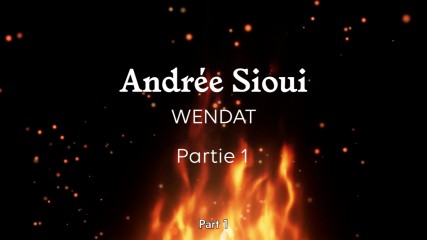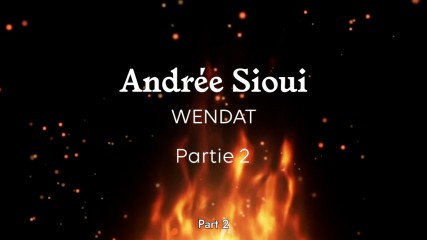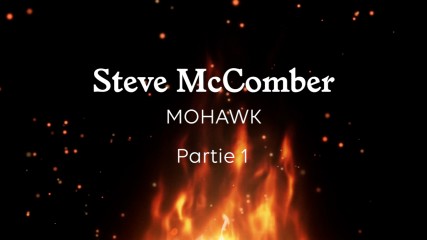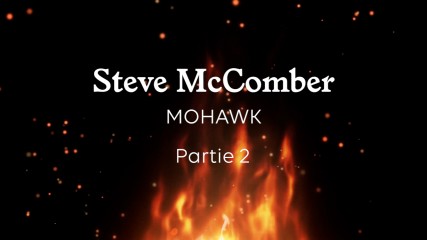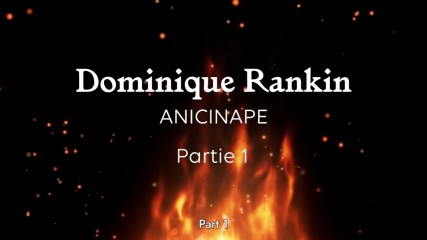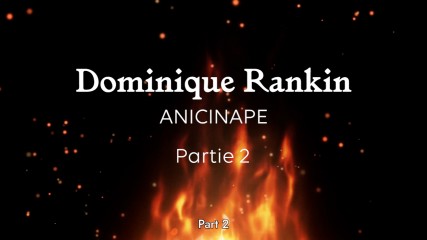Indigenous Accounts
Indigenous Accounts : traditions and Sharing
During the refurbishment of the signature exhibition Crossroads Montréal, representatives of three First Nations (Mohawk, Wendat, and Anishinaabe) worked closely with the project team to ensure that the vision and values of the First Nations were well-integrated throughout the exhibition layout. The importance of oral tradition and intangible heritage in Indigenous communities gave rise to the interactive installation Ancestral Memories of the Island. The original narratives included in the installation bear witness to the lives of Indigenous peoples, past and present. They give visitors an opportunity to familiarize themselves with the rich sounds of Indigenous languages and to immerse themselves in the spirit of the site.
With the sharers of these stories in attendance at the inauguration of the Crossroads Montréal exhibition in the spring of 2021, we took the opportunity to gather their testimonials.
Listen to them tell their stories of resilience and knowledge transference.
Andrée Lévesque Sioui, Wendat
Artist, author, singer-songwriter
Hello,
I am Wendat, from the Turtle Clan, part of the Sioui family.
My traditional name is Kwe'dokye'sé
I was born and I live in Québec.
I teach and speak a bit of our nation’s language.
Tomorrow, the children will speak it.
Like the ancestors, I sing a lullaby.
Narrative account in Wendat
My name in Wendat is Kwe'ndokye'sé, which means “she whose voice floats on the water.” I sing to teach the language of my ancestors. For a long time, this language and its traditions were forgotten; for a long time, I did not know how to speak it and live it. Today, as I do for the young generations in my community, I am sharing the echo of age-old knowledge with you.
She concludes her account by singing a lullaby in Wendat.
Neki neki neka ketakii wänen
Wee wee käne ki wänen
We Weee känee kiwe
Steve McComber, Kanienkéha:ka
Artist and guardian of ancestral seeds
My name is Silver Bear and I am a grower of corn.
Dear cousins, I am happy to see you today.
The sun shines down on our Mother Earth.
I am inviting you to gather around the fire where we will smoke the ceremonial pipe.
We will be grateful for what our Creator has given us on Mother Earth. Let our spirits unite.
Everything is in these words.
Narrative account in Kanien'kéha
We are happy to all be together here, safe and sound, after a long, trouble-free journey by water. I welcome you all, cousins. Our peoples share the same vast and rich territory.
We are gathered around this fire, at this place where rivers, humans, and spirits meet. This place that today, as always, allows us to exchange our goods and our knowledge. Thank you for the corn, the fish, the canoes, and the tobacco. Thank you for being here.
Dominique Rankin, Anishinaabe
Hereditary Algonquin Chief, founder of the Kina8at organization
Hello,
My name is Dominique Rankin. My real name is Kapiteotak and I am from the North. What you are hearing today is a true story and an ancient one. My great-grandfather, my grandfather, and my father would often tell me about how the Elders lived in the past. They said that encampments were always along the banks of the rivers. That is where all the nomadic peoples lived. Nomadic people had never come up against any barriers, they lived freely. They are places that are very special for the survival of all peoples. Nature gave them all the food they required. They became meeting places and places for celebrations. And that is where the Elders spoke of traditional life. My ancestors passed down their teachings to me, and today, I carry on their philosophy.
Narrative in Anishinaabe
The life of a nomadic people is a life without barriers, of kilometres by canoe. It is a simple life; our minds are at peace. Indian Summers, abundance, our many families. We have our health. The rivers are highways to food and knowledge. Our stories are told peacefully on the waters. I remember my father who would tell me of his father’s life, which was the life of which our ancestors spoke. These stories, I carry them within me today. I am fortunate to have lived what they lived.
Since Pointe-à-Callière first opened in 1992, collaboration with Indigenous communities has been one of the Museum’s key values. An inclusive process, respecting the traditions of Indigenous communities, together with a desire to present the latest scientific discoveries in the fields of archaeology and history, led to the creation of a scientific advisory committee consisting of specialists with complementary expertise for each of the Museum’s projects. This approach has enabled the Museum to involve members of the First Nations in the development of content for the Museum’s signature exhibitions and to reflect Indigenous viewpoints since the very beginnings of Pointe-à-Callière.

